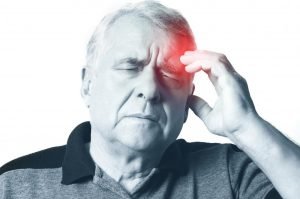Summary
When the body loses more water than it takes in, dehydration occurs. In this condition, a person may experience dry lips, mouth, and skin, headaches, thirst, and dark yellow urine, among other symptoms. In severe cases of dehydration, additional signs may include sunken eyes, rapid heartbeat and breathing, and general weakness or fatigue.
Dehydration commonly results from diarrhea or vomiting, which depletes the body not only of water but also of essential electrolytes. Electrolytes are minerals vital to the body’s functions, including sodium, calcium, potassium, chloride, phosphate, and magnesium. These minerals help regulate muscle function, nerve activity, and fluid balance. Without enough water and electrolytes, the body struggles to function properly.
To treat dehydration, it’s crucial to replenish lost fluids and electrolytes. Mild cases can be managed by drinking plenty of water, sports drinks, or oral rehydration solutions (ORS). For severe dehydration, however, hospitalization may be necessary so that the patient can receive intravenous fluids, allowing for quicker rehydration and electrolyte restoration.
Table of Contents
Symptoms of Dehydration

Depending on the severity of dehydration, a person may experience a range of symptoms. Mild dehydration can often be managed at home, while severe dehydration requires medical attention. Here are the typical symptoms for mild and severe dehydration:
Symptoms of mild dehydration:
Mild dehydration can often be treated at home through increased fluid intake. Common symptoms include:
- Slight dryness of lips, mouth, and skin. Dehydration causes a reduction in saliva and skin moisture, leading to dryness.
- Persistent feeling of thirst. The body’s way of signaling that it needs more fluids.
- Reduced frequency of urination. As dehydration progresses, the body conserves water by reducing urine output.
- Darker-than-usual urine. Dark yellow urine is a sign that the kidneys are conserving water.
- Dehydration can cause mild to moderate headaches as the brain temporarily contracts from fluid loss.
- Slight muscle cramps. Lack of fluid can result in electrolyte imbalance, causing occasional cramps.
Symptoms of severe dehydration:
Severe dehydration requires prompt medical care, as it can lead to serious health issues. Symptoms include:
- Sunken eyes. A common sign of severe dehydration, particularly visible in children and older adults.
- Extremely dry skin. The skin may lose elasticity and feel rough or appear wrinkled.
- Little to no urination, or very dark yellow urine. This indicates the kidneys are under strain and conserving as much fluid as possible.
- Dizziness and fainting. Severe dehydration affects blood pressure, which can cause dizziness or even fainting.
- Rapid heartbeat. The heart beats faster to compensate for lower blood volume.
- Rapid breathing. Breathing may become faster as the body tries to cope with fluid loss.
- Lethargy and weakness. Severe dehydration limits energy, leading to extreme tiredness and lethargy.
Symptoms of dehydration in infants and young children:
Young children and babies are more vulnerable to dehydration, and their symptoms can vary slightly. Signs to look out for include:
- Dry lips, mouth, and tongue. Lack of saliva and moisture in the mouth are tell-tale signs.
- Sunken eyes and fontanel (soft spot on the head). Dehydration may cause visible indentations, especially in infants.
- No tears when crying. A lack of tears indicates severe dehydration.
- Dry diaper for over 3 hours. This indicates a lack of urination, signaling fluid loss.
- Excessive sleepiness. Babies and young children may be unusually drowsy or less responsive.
Recognizing these symptoms early is crucial for effective treatment. Mild dehydration can typically be addressed by drinking more fluids, but severe cases require immediate medical intervention to prevent serious complications.
Types of Dehydration
There are three main types of dehydration, each characterized by the relative loss of water and electrolytes:
- Hypotonic dehydration. In this type, the body loses more electrolytes than water. This imbalance can lead to an excess of water within cells, causing swelling and potentially disrupting cellular functions.
- Hypertonic dehydration. This type is the opposite of hypotonic dehydration; the body loses more water than electrolytes. This results in cellular dehydration, as water moves out of cells to maintain balance, leading to cell shrinkage and an increased concentration of electrolytes in the body.
- Isotonic dehydration. In isotonic dehydration, there is an equal loss of both water and electrolytes. This is the most common type of dehydration, often occurring with conditions like diarrhea and vomiting, where fluids and salts are lost at similar rates.
To determine whether dehydration is hypotonic, hypertonic, or isotonic, laboratory tests such as blood tests and urinalysis are typically performed. These tests help assess electrolyte levels and fluid balance, guiding appropriate treatment and rehydration strategies for each specific type of dehydration.
Diagnostic Procedures for Dehydration
Diagnosing dehydration accurately is crucial to providing the appropriate treatment. Healthcare providers use a combination of physical exams, laboratory tests, and vital signs to assess hydration status and determine the severity of dehydration. Here are the common diagnostic procedures used:
- Physical examination. A doctor begins by evaluating physical signs of dehydration, such as dry mouth, dry skin, sunken eyes, rapid pulse, and low blood pressure. Skin elasticity is also tested by pinching the skin on the hand or arm; if the skin does not return to normal quickly, it may indicate dehydration.
- Vital signs assessment. Checking blood pressure, heart rate, and breathing rate can help gauge the severity of dehydration. Low blood pressure, rapid heart rate, and increased breathing rate are all indicators of dehydration, especially if combined with other symptoms.
- Blood tests. Blood tests, such as a complete blood count (CBC) and basic metabolic panel, measure electrolyte levels, kidney function, and blood sugar. High levels of sodium (hypernatremia) or imbalances in other electrolytes, as well as elevated blood urea nitrogen (BUN) and creatinine, are common indicators of dehydration.
- Urinalysis. A urine test helps assess hydration by measuring the concentration, color, and presence of electrolytes in the urine. Dark, concentrated urine with high specific gravity indicates dehydration, as does a low urine output. Urinalysis may also reveal high levels of waste products, which can signal dehydration.
- Capillary refill test. This simple test involves pressing on the fingernail until it turns white, then observing how quickly the color returns once the pressure is released. A delayed return of blood flow (over 2 seconds) can indicate dehydration, especially in children.
- Fluid intake and output monitoring. In hospital settings, healthcare providers may monitor a patient’s fluid intake and output over a period of time to assess hydration levels. Low fluid output compared to intake may indicate dehydration or other underlying issues affecting fluid balance.
These diagnostic procedures enable healthcare providers to assess dehydration accurately and determine its severity, guiding effective treatment. Early detection and appropriate interventions are essential to prevent complications associated with severe dehydration.
Complications of Untreated Dehydration
When dehydration goes untreated, it can lead to serious health complications, affecting various bodily functions and potentially leading to life-threatening conditions. Here are some of the primary complications associated with untreated dehydration:
- Kidney and urinary problems. Chronic dehydration can lead to kidney stones, urinary tract infections (UTIs), and even kidney failure. The kidneys require adequate water to flush out waste, and when fluids are low, waste products can accumulate, forming kidney stones or leading to infection.
- Heat-related illnesses. Without sufficient hydration, the body cannot cool itself effectively. This increases the risk of heat-related conditions, such as heat cramps, heat exhaustion, and potentially fatal heatstroke, especially in hot weather or during physical activity.
- Hypovolemic shock. Severe dehydration can cause hypovolemic shock, a condition where low blood volume leads to a dangerous drop in blood pressure and reduced oxygen supply to organs. This condition is life-threatening and requires immediate medical intervention.
- Electrolyte imbalance. Dehydration leads to the loss of vital electrolytes, such as sodium, potassium, and calcium, which are essential for muscle and nerve function. An imbalance can cause symptoms ranging from muscle cramps and irregular heartbeats to seizures and confusion.
- Seizures. A lack of water and electrolytes can disrupt the electrical signals in the body, leading to involuntary muscle contractions and, in severe cases, seizures. This is particularly common when electrolyte levels, such as sodium or potassium, drop too low.
- Low energy and cognitive impairment. Dehydration can lead to fatigue, dizziness, and confusion. When the brain lacks adequate hydration, it impacts concentration, memory, and overall cognitive function, potentially leading to confusion and disorientation in severe cases.
- Coma and death. In extreme cases, untreated dehydration can result in coma and even death due to organ failure and the body’s inability to function without adequate fluid balance.
Preventing dehydration by staying well-hydrated, recognizing early signs, and seeking medical help if symptoms worsen is essential to avoid these serious complications. Drinking water consistently throughout the day, especially in hot climates or during physical activity, is key to maintaining optimal health and preventing these potentially severe outcomes.
Causes of Dehydration

The body loses water and electrolytes through sweating, urination, bowel movements, crying, saliva production, and even breathing. These processes are normal and help to eliminate toxins from the body. However, excessive loss of water and electrolytes can lead to dehydration, especially in cases of:
- Frequent bowel movements rapidly deplete water and electrolytes, often leading to dehydration.
- Loss of fluids and electrolytes through vomiting can quickly cause dehydration, especially if persistent.
- High fever. Fever increases the body’s metabolic rate and can lead to significant fluid loss through sweating.
- Excessive sweating. Physical exertion, hot climates, or fever can lead to heavy sweating, resulting in fluid and electrolyte loss.
- Frequent urination. Conditions like diabetes or certain medications may cause increased urination, which can contribute to dehydration.
In addition to these conditions, other factors may lead to dehydration, such as:
- Not drinking enough water. A low fluid intake throughout the day can increase the risk of dehydration, especially during physical activity or warm weather.
- Reduced thirst sensation. Some individuals, particularly the elderly, may not feel thirsty even when their body needs fluids.
- Loss of interest in drinking water due to throat discomfort. Pain or irritation in the throat can lead to reduced fluid intake, heightening dehydration risk.
Recognizing these causes and understanding how fluid loss occurs in daily activities can help prevent dehydration. Regular hydration, particularly in situations that increase fluid loss, is essential to maintain a healthy balance of water and electrolytes in the body.
Prevention of Dehydration

To prevent dehydration, it’s essential to follow these practices:
1, Drink eight glasses of water daily. Replenish lost fluids by drinking at least eight glasses of water each day. If you’re exercising or engaging in physical activities, increase your water intake to compensate for fluid loss.
- Increase water intake during hot weather. Hot weather leads to more sweating, which increases fluid loss. To avoid dehydration in hot conditions, drink more water throughout the day.
- Avoid overly sugary drinks and coffee. Sugary beverages and coffee can cause throat dryness and may lead to more frequent urination, which contributes to fluid loss. Opt for water or electrolyte-rich drinks instead.
- Wear comfortable clothing. Excessive sweating can lead to fluid loss, so wearing light and breathable clothing helps minimize sweating, particularly in hot weather.
- Avoid exercising or heavy activities during peak heat. If you’re exercising outdoors, choose early morning or evening when temperatures are lower. Likewise, perform heavy tasks during cooler times of the day to reduce the risk of dehydration.
- Eat fruits and vegetables. Fruits and vegetables are high in water content and help replenish lost fluids and electrolytes. They also provide essential vitamins and minerals that support overall health.
For infants or young children who are showing severe signs of dehydration, immediate medical attention is crucial. Dehydration can be especially dangerous for babies and children, as it may lead to malnutrition, seizures, and even brain damage if left untreated. Parents should consult a healthcare provider promptly to ensure appropriate care for their child.
These preventive steps are simple but effective in maintaining hydration and preventing the health complications associated with dehydration.
Risk Factors for Dehydration
Anyone can experience dehydration, but certain factors can increase the likelihood of developing this condition:
- Being an infant or young child. Infants and young children are more susceptible to dehydration, especially when they have a fever, which increases water loss. Additionally, due to their young age, they may not yet communicate their thirst clearly, making it harder to ensure they are drinking enough fluids.
- Being elderly. As people age, they may have reduced mobility, making it difficult to retrieve water or other fluids. Joint pain, frailty, or difficulty moving around may discourage regular hydration. In some cases, older adults may also have conditions such as heart disease that limit fluid intake, making them more vulnerable to dehydration.
- Having certain medical conditions. Conditions like diabetes can lead to frequent urination, resulting in significant fluid and electrolyte loss. Additionally, illnesses affecting the throat, such as sore throat or infections, can make swallowing painful, reducing a person’s desire to drink water and increasing dehydration risk.
- Being an athlete. Athletes are also at a higher risk of dehydration due to intense physical activity, which leads to significant water and electrolyte loss through sweat. Without adequate hydration before, during, and after exercise, athletes can become dehydrated quickly.
Understanding these risk factors is crucial in taking preventive measures against dehydration, especially for those with a higher susceptibility. Regular hydration, monitoring fluid intake, and addressing any underlying health conditions can significantly reduce the risk of dehydration.
Dehydration FAQs
Here are some frequently asked questions about dehydration, its causes, symptoms, prevention, and treatment options:
- What causes dehydration?
Dehydration occurs when the body loses more fluids than it takes in, often due to sweating, urination, vomiting, diarrhea, or fever. Not drinking enough water, especially during physical activity or in hot weather, can also lead to dehydration. - What are the symptoms of dehydration?
Common symptoms include dry mouth, dry skin, thirst, dark yellow urine, fatigue, and dizziness. Severe dehydration may cause confusion, rapid heartbeat, sunken eyes, and very low urine output. Infants and young children may display symptoms such as a dry mouth, lack of tears, sunken soft spot on the head, and irritability. - Who is at higher risk of dehydration?
Infants, young children, older adults, athletes, and people with chronic illnesses like diabetes are more susceptible to dehydration. Hot climates, physical activity, and certain medications can also increase the risk. - How much water should I drink to avoid dehydration?
A general guideline is to drink at least eight 8-ounce glasses of water a day (about 2 liters), but individual needs vary based on factors like activity level, climate, and overall health. Athletes and people in hot climates may need more fluids. - Can dehydration cause serious health problems?
Yes, untreated dehydration can lead to complications like heat exhaustion, kidney stones, urinary tract infections, and in extreme cases, kidney failure. Severe dehydration can also cause low blood volume shock (hypovolemic shock), a life-threatening condition. - How is dehydration diagnosed?
Dehydration is typically diagnosed through physical examination and vital signs assessment. Blood tests may be used to check electrolyte levels, while urinalysis can indicate hydration status based on urine concentration and color. - Can dehydration be treated at home?
Mild to moderate dehydration can usually be treated at home by drinking water, oral rehydration solutions (ORS), or electrolyte drinks. Severe dehydration, however, may require medical treatment, including intravenous (IV) fluids to rapidly restore hydration and electrolyte balance. - How can dehydration be prevented?
Staying hydrated by drinking plenty of fluids, especially during hot weather, physical activity, or illness, is key. Avoiding excessive caffeine and sugary drinks, which can increase fluid loss, is also recommended. Eating water-rich foods, such as fruits and vegetables, can further help maintain hydration. - What should I do if a child or infant shows signs of dehydration?
Infants and children are particularly vulnerable to dehydration. If you notice symptoms like a dry mouth, sunken eyes, lack of tears when crying, or a dry diaper for over three hours, provide fluids and consult a healthcare provider promptly, as children can become severely dehydrated quickly. - Can drinking too much water cause dehydration?
No, drinking too much water does not cause dehydration; however, excessive water intake without adequate electrolyte replacement can lead to a condition called hyponatremia, or water intoxication. This dilutes sodium levels in the blood, causing symptoms similar to dehydration, such as nausea, confusion, and in severe cases, seizures.


